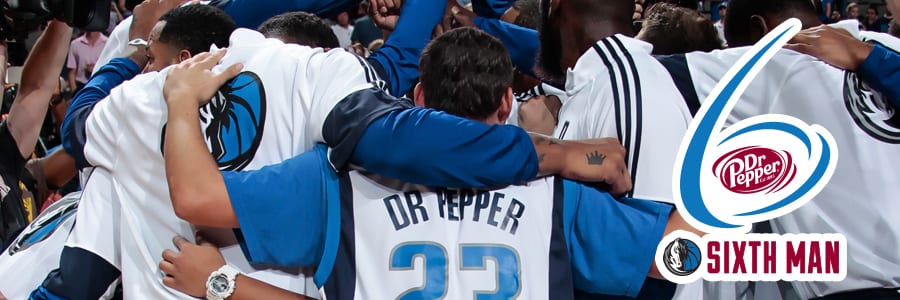by Drew Mitchell – January 2016
Who are you?
What separates you from everyone else in your business? How is your brand perceived by others?
“Branding you” was the topic of our panel discussion held at the new Foster Campus for Business and Innovation at Baylor University. The audience consisted of students from the Sports Sponsorship & Sales (S3) program as well as sports industry executives. The panel included Tami Walker, Head of Brand Management for Phillips 66; Derek Blake, Vice President of Partnership Marketing and Military Programs at La Quinta Inns & Suites; and, Greg Grissom, Vice President of Corporate Development at the Houston Texans.
The discussion yielded important insights on how to brand yourself in any business, but specifically in the business of sports. We each have a personal brand that makes each of us unique, as the iconic Dr Pepper brand reminds us, we are “Always One of A Kind.”
The Four Pillars
Derek introduced four key underlying principles of who you are and how others will see you.
- Connecting – Be a networker. Help people meet other people, which in return broadens your network.
- Humility – Unless you are an entrepreneur, you will always have a boss until you become CEO. And then you will have a board of directors. Always have the mindset of WIT–whatever it takes. Be willing to do anything, even if it means taking out the trash or making the coffee, no matter your seniority level.
- Integrity – “Don’t shift with the wind.” Do the right thing, even when no one is watching. During hard times don’t stray from core principles and values.
- Giving – Set yourself apart by giving back, regardless of how much money you make or what your position. Plenty of people know how to take. Being a giver means you are a service to your peers, business, society and the community.
Why Ration Passion?
Tami talked about how it was important to have a framework for your personal brand. First, you must develop expertise. Whether it’s through education, experience or a combination of other learning opportunities, expertise sets you apart from others. Know what skills and talents you possess and what skills you need to acquire. Second, you must have passion that distinguishes you from others.
Mike Libecki is an example of someone who pursues his passion. Life is sweet–the time is now–so, why ration passion? Don’t hold back who you are and showing others what you love. Being passionate is being human. Don’t place a limit on your passion. Combining passion with expertise is a great combination.
is an example of someone who pursues his passion. Life is sweet–the time is now–so, why ration passion? Don’t hold back who you are and showing others what you love. Being passionate is being human. Don’t place a limit on your passion. Combining passion with expertise is a great combination.
Relatedly, Greg emphasized three ingredients to your personal brand:
- Passion – See a common theme here? Passion can change and evolve as you experience life, but decide what passion really makes you tick now.
- Competitiveness – Compete. Be bold. Make decisions. As a young adult and student, this is the perfect time in life to be bold and take a risk with your career.
- Trust – Your personal brand reflects those who surround you. Others see who you trust and those who trust you. Building trust with the right people in your network is important in building your brand.
Market your Brand
After you understand your personal brand, the next step is to market your brand. What good does your brand do if nobody knows about it? Here are a few pointers from the panel:
- Use the Power of Who – One of the commonalities among panelists was the power of your own personal network. Who you know influences the content of your brand and how you market it. Bob Beaudine has a great book titled “The Power of Who.” Read it if you want to grow your brand. One point Beaudine emphasizes is to use your “who” to market you.
- Get Involved – Involvement in a variety of activities places your brand across a wider market. I joined St. Jude as their Corporate Chairperson this past year. I am passionate about the cause. I wanted to share my talents. Serving introduced me to a totally new network of people. Get involved to serve. Don’t overlook the opportunity to build your network while you serve.
- Be Different – Being your own brand means being different. For example, since everyone is so consumed with social media and email, we forget about the power of postal mail. Executives may (dis)miss an email, but every hand-written note gets read. When you meet someone new, send them a hand-written note. That makes you different.
- Promote –Promoting your own personal brand is as easy as coming up with a username and password. LinkedIn is a free platform to share your talents and skills and connect with others. One approach–sometimes required by corporate policy–is to create separate professional Facebook and Twitter accounts. Use social media and digital strategically. Be careful. Most future employers will review before hiring.
Develop your Brand
Now that you understand what your brand is and how to market it, develop your brand. Notes from the panel include:
- Risk-taking– Green paper buys things. We like it. But don’t let money get in the way of your passion. Use the time early in your career to take a risk while responsibilities are low. Go deep on why you are passionate. Then ACT on that passion without caring about the financial compensation. Now is the time to set the momentum for your career. Money will follow.
- Learning Agility – Be a “seeker of knowledge.” The number one predictor of career success is learning agility, which includes people agility, mental agility and strategic agility.
- Power of Mentors – Mirror others that have success. A proverb provides, “Plans fail for lack of counsel, but with many advisers they succeed.” Identify seasoned veterans as mentors. Each executive you see today still has mentors who offer advice and serve as a mirror for the future self. Find someone who shares the same core values to help lead along your journey.
- Build your network – You always have room to add to your network. The bigger your network, the more visible your brand. It is still true: Who you know gets you the job. What you know keeps you there.
Derek Blake sums it up, plain and simple, “My name is all I have.” At the beginning of the day and at the end of the day, people buy you, not the product you sell. Be intentional–have a plan–on how to market your brand. Be the brand others can’t live without.
Want to know how to find your perfect employer in sports? Read on!























